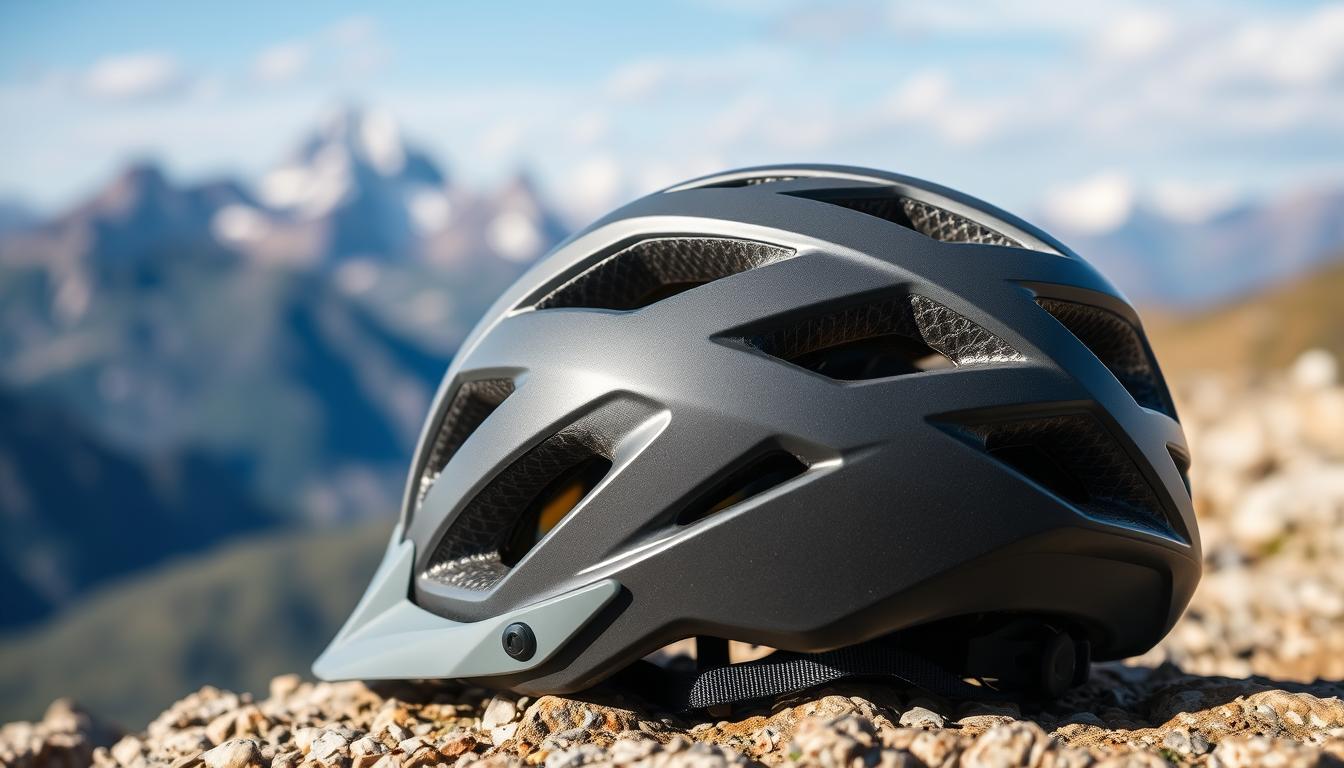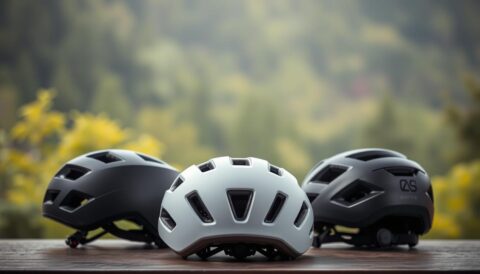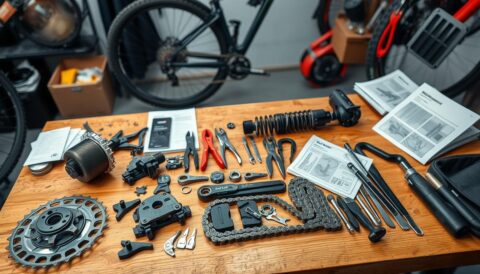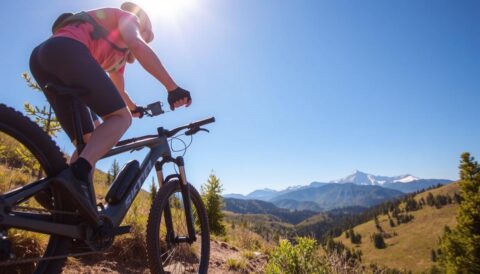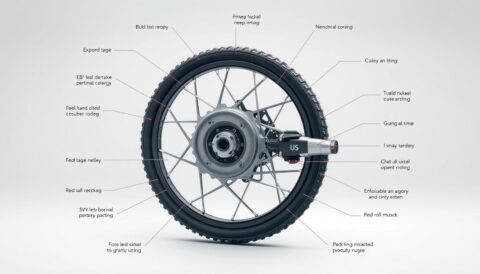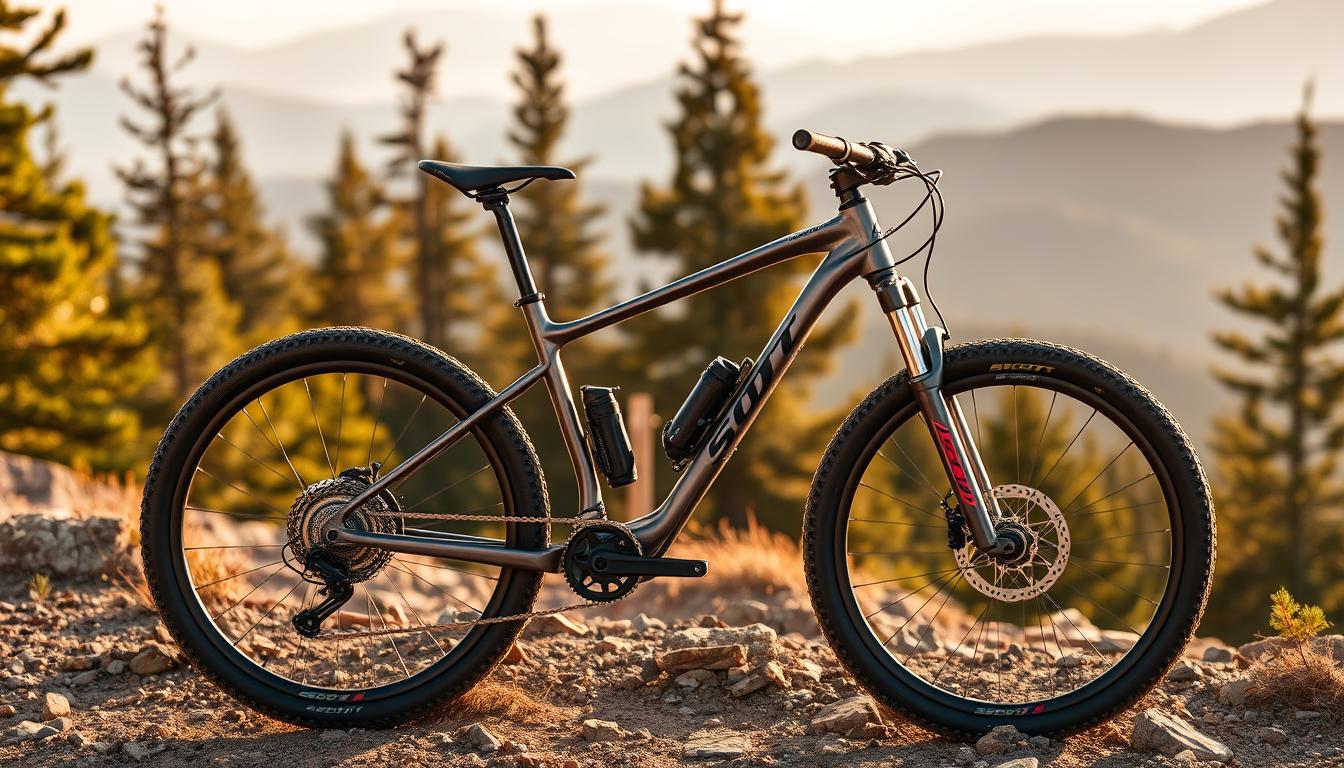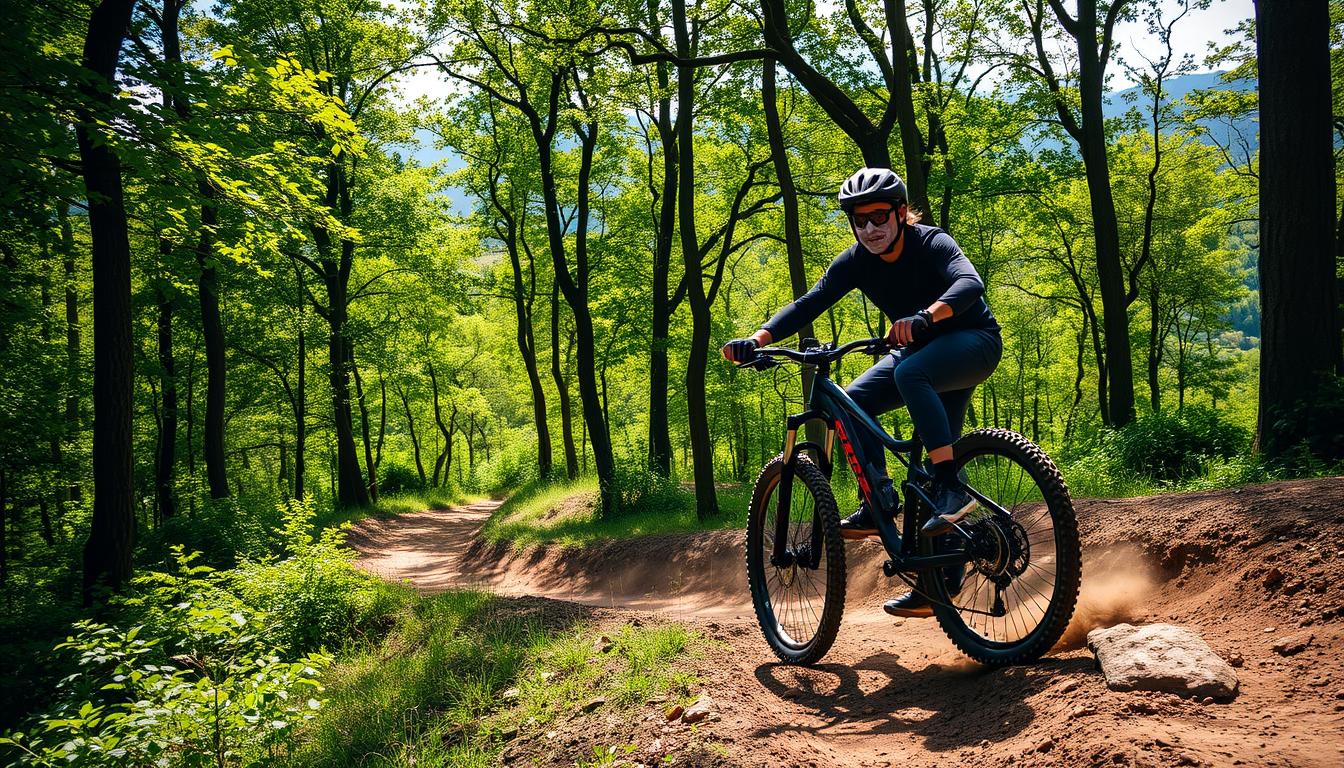Choosing the right mountain bike helmet is key for safety and comfort. A helmet that fits well not only keeps you safe during a fall but also makes riding more enjoyable. With so many options out there, it’s important to know about different features and types of helmets.
A mountain bike helmet, made for off-road biking, offers more coverage and better protection than regular road bike helmets. No matter how you ride, this guide will help you pick the best helmet. It will ensure you get both protection and comfort.
Understanding the Importance of a Mountain Bike Helmet
The importance of helmets in mountain biking is huge. Studies show they reduce head injury by 48 percent. They also cut down serious head injuries by 60 percent and traumatic brain injuries by 53 percent. These numbers show how vital a good helmet is for bike safety. Mountain bike helmets offer more coverage, especially at the back of the head. This is crucial for protection against falls on rough ground.
Choosing the right mountain bike helmet requires attention to helmet features. They often have fewer vents than road helmets, stopping dirt from getting in. Safety standards set in 1999 ensure helmets come with essential safety features. A helmet with MIPS technology greatly increases downhill protection.
The cost of mountain bike helmets varies, with prices from under $50 to over $300. Most are priced in the mid-range. It’s important to measure your head before buying to ensure a proper fit. A good fit helps keep the helmet secure during rides. For tips on starting mountain biking, see this beginner’s guide.
Types of Mountain Bike Helmets
Choosing the right mountain bike helmet is crucial for safety and performance. This choice is mainly between half-shell and full-face helmets. Each type supports different riding needs.
Half-Shell Helmets
Half-shell helmets are versatile, perfect for various styles like cross-country and trail. They cover the top and sides of the head. This balance provides good airflow and safety during long rides.
Full-Face Helmets
Full-face helmets are great for downhill or dirt jump riders. They cover your entire head, including the chin. This makes them the best choice for activities with high impact.
Choosing Based on Riding Discipline
When picking a helmet, think about your riding style. Mountain bikers need to consider their activity’s protection needs. Your comfort and the environment you ride in also play a big role.
Key Features to Look for in a Mountain Bike Helmet
Choosing the right mountain bike helmet means knowing key features. These features boost safety and comfort on your ride. Look for ventilation, adjustable fits, and more to enhance your experience.
Ventilation and Weight
Staying cool is crucial when biking. That’s why a helmet with good ventilation matters. The Bell Sixer MIPS is top-rated for letting air in. It weighs 392g, combining cool air flow with lightness for protection.
Adjustable Fit Systems
A helmet that fits well is important. It should adjust to fit different head shapes and sizes. The Troy Lee A3 is great for this, offering a secure fit at just 411g.
Rotational Impact Protection Systems (MIPS)
MIPS helps keep your head safe by reducing twist forces in a crash. Helmets like the Fox Dropframe have it. This feature lowers the chance of brain injuries. It’s a smart pick for serious riders.
How to Find the Right Fit for Your Mountain Bike Helmet
Finding the right fit for a mountain bike helmet is crucial. It keeps you safe and comfortable. These tips will help you measure your head size and adjust for comfort.
Measuring Your Head Size
First, measure your head’s circumference. Use a flexible tape measure above your eyebrows. This helps find the right helmet size and ensures it fits snugly for better protection. Remember, different brands may have varied sizing. Always check their size charts.
Adjusting the Helmet for Optimal Comfort
After finding the correct size, it’s time to adjust. Helmets have a fit system for easy adjustments. Make sure the straps are tight enough to keep the helmet secure but not too tight. The helmet should stay on without causing discomfort. Remember to do a “shake test” to check the fit. For detailed fitting instructions, visit this resource.
Safety Standards and Certifications for Mountain Bike Helmets
When you choose a mountain bike helmet, it’s key to know about the helmet safety standards. In the United States, the rules say helmets must pass the Consumer Product Safety Commission (CPSC) tests. These tests include four crash simulations to make sure the force on the head is no more than 300 g. This helps to keep riders safe during crashes. The European EN-1078 standard also makes helmets go through two crash tests with no more than 250 g of force, offering a good level of safety for bikers.
Understanding CPSC and EN-1078 Standards
The importance of these certification standards is huge. For example, helmets that meet the Australian AS/NZS 2063:2008 standards have to go through four impact tests. They must not go over 250 g and 500 N of force. Dutch standards, like NTA 8776, are for higher-speed impacts and have similar rules. The Snell Foundation’s B-95 standard asks for even better impact resistance and covers more of the head. This shows why riders must pick helmets that are certified to be sure they are well protected.
Importance of Certification for Safety Assurance
Buying a helmet that meets these helmet safety standards is crucial for better safety on rides. These certifications mean the helmet can be trusted for performance and reliability. They also help lower the chance of head injuries. As more people enjoy mountain biking, knowing about safety equipment becomes more important. To learn more about these important standards, check out further details on these certification standards.
FAQ
Why is wearing a mountain bike helmet important?
Wearing a helmet is key to head protection during falls. It helps prevent serious head and brain injuries. A good helmet lessens the risk.
How do I choose the right type of mountain bike helmet?
Your riding style affects your helmet choice. Half-shell helmets suit cross-country and trail riding. They offer good ventilation and protection. Full-face helmets are best for downhill and jumps. They provide the most coverage.
What features should I look for in a mountain bike helmet?
Look for helmets with good airflow, light weight, a snug fit, and MIPS for added safety. These features improve comfort and reduce injury risks.
How can I ensure a proper fit for my mountain bike helmet?
Measure your head just above your eyebrows. Use this to find the right size. Then, adjust the fitting system to make sure it’s snug but comfortable.
What safety standards should I look for when buying a mountain bike helmet?
Choose helmets certified by the CPSC in the USA or with the EN-1078 standard in Europe. These meet safety standards for head protection.
Can mountain bike helmets be customised for comfort?
Yes! Many helmets have adjustable or replaceable padding. This customization enhances comfort and fit, making your rides more enjoyable.
How often should I replace my mountain bike helmet?
Replace your helmet every three to five years, or immediately after an accident. Even if it looks fine, its protection might be reduced.
